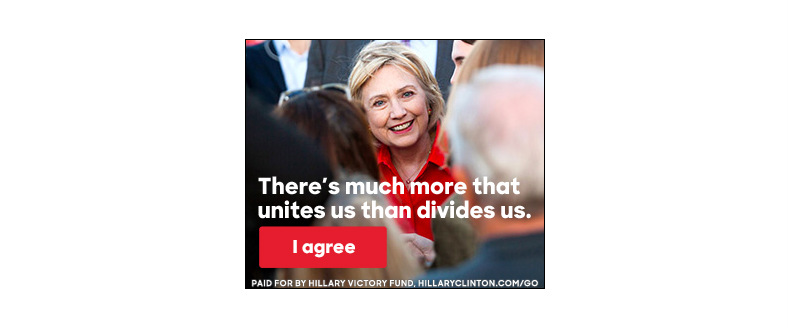Advertising Age’s Kate Kaye caught something this week that startled me:
…despite the fact that he continues to campaign hard in California, which holds its delegate-rich primary next week, the Sanders campaign appears to have brought its standard digital display and video display advertising to a halt since the end of May. Moat data does not account for Facebook or Twitter ads, so those still could be running.
A sign that Bernie’s campaign is waking up to reality, even if many of his supporters cling to the hope of deliverance via superdelegate defection? The advertising pause is still surprising, though, since he’s put such an emphasis on beating Hillary next week in California. As I point out in the piece,
Mr. Delany added that digital advertising would help target key demographic groups of voters who will be important to either Democratic campaign for a win in California.
In particular, they could help him get more out of his many recent rallies in the state:
“Considering how many on-the-ground appearances he’s doing, you’d think digital would be great for amplifying the effect,” said Colin Delany, editor of Epolitics.com and a digital strategy consultant for advocacy and political clients on the left.
Meanwhile, Hillary Clinton’s digital ads are pushing a message of unity, something that should resonate both with Sanders supporters now AND agaist Trump in the months to come:
Ms. Clinton’s message of unity works for the current primary race as well as a general election concept that can counteract the divisive messaging from Donald Trump’s campaign, said Mr. Delany. “The idea of coming together, of America being made up of groups coming together, that’s a very deep idea in the American psyche.”
More details about the ad content and spending are in the piece; also note that the Republican party has committed to spend at least $150 million on digital ads this year. Watch for Kate to keep an eye on how they use that money to support a Trump campaign that’s openly disparaged political data and digital outreach.
On a technical note, take a look at the sample ad at the top of the page, specifically at the action “button” that says, “I agree.” I’m sure it tested well, and it also echoes the messaging subtly — “I agree” implies a coming together of the minds, just as the ad promotes a political coming-together. If you DO agree, it’s natural to want to click. This kind of language is common for a reason: it tends to work.
– cpd

